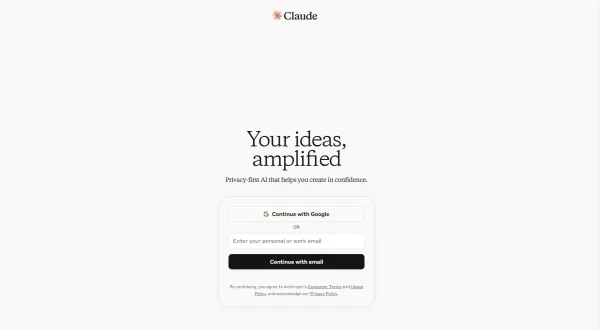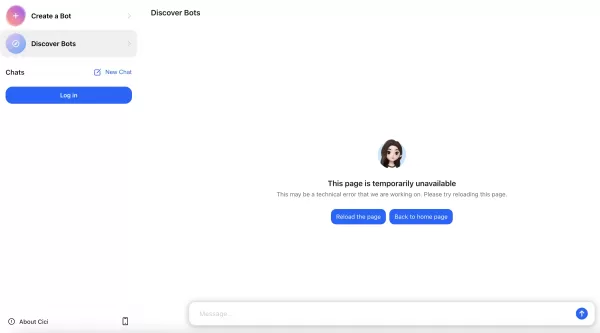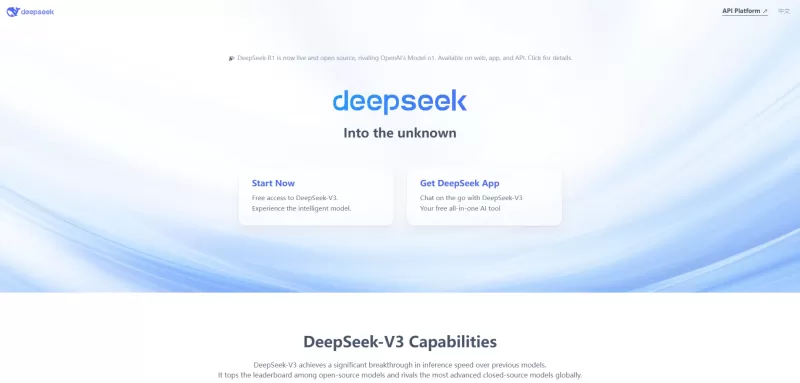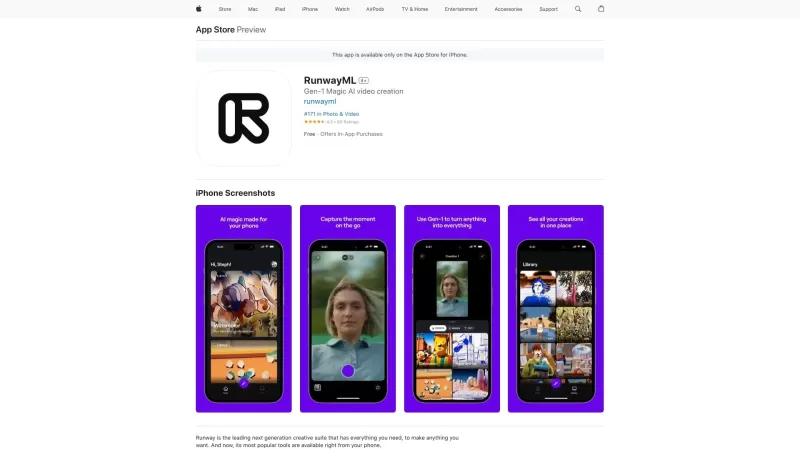MCP Standardizes AI Connectivity with Tools and Data: A New Protocol Emerges
If you're diving into the world of artificial intelligence (AI), you've probably noticed how crucial it is to get different AI models, data sources, and tools to play nicely together. That's where the Model Context Protocol (MCP) comes in, acting as a game-changer in standardizing AI connectivity. This protocol ensures that AI models, data systems, and tools can communicate seamlessly, enhancing AI-driven workflows. Let's dive into what MCP is all about, how it works, its benefits, and its potential to shape the future of AI connectivity.
The Need for Standardization in AI Connectivity
AI is booming across industries like healthcare, finance, manufacturing, and retail. As a result, companies are juggling more AI models and data sources than ever before. The problem? Each AI model tends to be designed for a specific context, making it tricky for them to chat with each other, especially when they're dealing with different data formats, protocols, or tools. This fragmentation leads to inefficiencies, errors, and delays in deploying AI.
Without a standardized way for these systems to talk to each other, businesses struggle to integrate their AI models or scale their AI projects effectively. The lack of interoperability often results in isolated systems that don't work together, limiting AI's full potential. That's where MCP steps in, offering a standardized protocol that ensures smooth integration and operation across the entire system.
Understanding Model Context Protocol (MCP)
Introduced by Anthropic in November 2024, the company behind Claude's large language models, MCP has been a game-changer. Even OpenAI, the brains behind ChatGPT and a competitor to Anthropic, has adopted this protocol to connect their AI models with external data sources. The goal? To help advanced AI models, like large language models (LLMs), generate more relevant and accurate responses by providing them with real-time, structured context from external systems. Before MCP, integrating AI models with various data sources was a messy affair, requiring custom solutions for each connection. MCP streamlines this process with a single, standardized protocol.
Think of MCP as the "USB-C port for AI applications". Just like USB-C simplifies device connectivity, MCP standardizes how AI applications interact with diverse data repositories, such as content management systems, business tools, and development environments. This reduces the complexity of integrating AI with multiple data sources, replacing fragmented, custom-built solutions with a single protocol. Its importance lies in its ability to make AI more practical and responsive, enabling developers and businesses to build more effective AI-driven workflows.
How Does MCP Work?
MCP operates on a client-server architecture with three key components:
- MCP Host: This is the application or tool that needs data through MCP, like an AI-powered integrated development environment (IDE), a chat interface, or a business tool.
- MCP Client: It manages communication between the host and servers, routing requests from the host to the appropriate MCP servers.
- MCP Server: These are lightweight programs that connect to specific data sources or tools, such as Google Drive, Slack, or GitHub, and provide the necessary context to the AI model via the MCP standard.
When an AI model needs external data, it sends a request via the MCP client to the corresponding MCP server. The server retrieves the requested information from the data source and returns it to the client, which then passes it to the AI model. This ensures the AI model always has access to the most relevant and up-to-date context.
MCP also includes features like Tools, Resources, and Prompts, which support interaction between AI models and external systems. Tools are predefined functions that enable AI models to interact with other systems, while Resources refer to the data sources accessible through MCP servers. Prompts are structured inputs that guide how AI models interact with data. Advanced features like Roots and Sampling allow developers to specify preferred models or data sources and manage model selection based on factors like cost and performance. This architecture offers flexibility, security, and scalability, making it easier to build and maintain AI-driven applications.
Key Benefits of Using MCP
Adopting MCP comes with several advantages for developers and organizations integrating AI into their workflows:
- Standardization: MCP provides a common protocol, eliminating the need for custom integrations with each data source. This reduces development time and complexity, allowing developers to focus on building innovative AI applications.
- Scalability: Adding new data sources or tools is straightforward with MCP. New MCP servers can be integrated without modifying the core AI application, making it easier to scale AI systems as needs evolve.
- Improved AI Performance: By providing access to real-time, relevant data, MCP enables AI models to generate more accurate and contextually aware responses. This is particularly valuable for applications requiring up-to-date information, such as customer support chatbots or development assistants.
- Security and Privacy: MCP ensures secure and controlled data access. Each MCP server manages permissions and access rights to the underlying data sources, reducing the risk of unauthorized access.
- Modularity: The protocol's design allows flexibility, enabling developers to switch between different AI model providers or vendors without significant rework. This modularity encourages innovation and adaptability in AI development.
These benefits make MCP a powerful tool for simplifying AI connectivity while improving the performance, security, and scalability of AI applications.
Use Cases and Examples
MCP finds applications across various domains, with real-world examples showcasing its potential:
- Development Environments: Tools like Zed, Replit, and Codeium are integrating MCP to allow AI assistants to access code repositories, documentation, and other development resources directly within the IDE. For instance, an AI assistant could query a GitHub MCP server to fetch specific code snippets, providing developers with instant, context-aware assistance.
- Business Applications: Companies can use MCP to connect AI assistants to internal databases, CRM systems, or other business tools. This enables more informed decision-making and automated workflows, such as generating reports or analyzing customer data in real-time.
- Content Management: MCP servers for platforms like Google Drive and Slack enable AI models to retrieve and analyze documents, messages, and other content. An AI assistant could summarize a team's Slack conversation or extract key insights from company documents.
The Blender-MCP project is another example of MCP enabling AI to interact with specialized tools. It allows Anthropic's Claude model to work with Blender for 3D modeling tasks, demonstrating how MCP connects AI with creative or technical applications.
Additionally, Anthropic has released pre-built MCP servers for services such as Google Drive, Slack, GitHub, and PostgreSQL, which further highlight the growing ecosystem of MCP integrations.
Future Implications
The Model Context Protocol represents a significant step forward in standardizing AI connectivity. By offering a universal standard for integrating AI models with external data and tools, MCP is paving the way for more powerful, flexible, and efficient AI applications. Its open-source nature and growing community-driven ecosystem suggest that MCP is gaining traction in the AI industry.
As AI continues to evolve, the need for easy connectivity between models and data will only increase. MCP could eventually become the standard for AI integration, much like the Language Server Protocol (LSP) has become the norm for development tools. By reducing the complexity of integrations, MCP makes AI systems more scalable and easier to manage.
The future of MCP depends on widespread adoption. While early signs are promising, its long-term impact will depend on continued community support, contributions, and integration by developers and organizations.
The Bottom Line
MCP offers a standardized, secure, and scalable solution for connecting AI models with the data they need to succeed. By simplifying integrations and improving AI performance, MCP is driving the next wave of innovation in AI-driven systems. Organizations seeking to leverage AI should explore MCP and its growing ecosystem of tools and integrations.
Related article
 Alibaba's 'ZeroSearch' AI Slashes Training Costs by 88% Through Autonomous Learning
Alibaba's ZeroSearch: A Game-Changer for AI Training EfficiencyAlibaba Group researchers have pioneered a breakthrough method that potentially revolutionizes how AI systems learn information retrieval, bypassing costly commercial search engine APIs e
Alibaba's 'ZeroSearch' AI Slashes Training Costs by 88% Through Autonomous Learning
Alibaba's ZeroSearch: A Game-Changer for AI Training EfficiencyAlibaba Group researchers have pioneered a breakthrough method that potentially revolutionizes how AI systems learn information retrieval, bypassing costly commercial search engine APIs e
 Claude 4 Unveiled: Next-Gen AI Models Boost Coding and Agentic Performance
Anthropic has launched its Claude 4 model family, marking a significant advancement for developers crafting cutting-edge AI assistants and coding solutions. The lineup features Claude Opus 4, a top-ti
Claude 4 Unveiled: Next-Gen AI Models Boost Coding and Agentic Performance
Anthropic has launched its Claude 4 model family, marking a significant advancement for developers crafting cutting-edge AI assistants and coding solutions. The lineup features Claude Opus 4, a top-ti
 Anthropic Unveils App Integrations and Advanced Research Features for Claude AI
Anthropic introduced on Thursday a fresh approach for linking applications and tools to its AI assistant Claude, along with an upgraded deep research function that lets Claude explore the web, corpora
Comments (10)
0/200
Anthropic Unveils App Integrations and Advanced Research Features for Claude AI
Anthropic introduced on Thursday a fresh approach for linking applications and tools to its AI assistant Claude, along with an upgraded deep research function that lets Claude explore the web, corpora
Comments (10)
0/200
![RichardJackson]() RichardJackson
RichardJackson
 September 23, 2025 at 12:30:55 PM EDT
September 23, 2025 at 12:30:55 PM EDT
MCPの出現はAI業界で長年待たれていた標準化の第一歩だね。特に異なるモデル連携時のデータフォーマット問題は現場で本当に悩んでたから。でも実際の適用事例が気になる…早く実証ケースを見てみたい! 🤔


 0
0
![OliviaBaker]() OliviaBaker
OliviaBaker
 August 26, 2025 at 7:01:20 PM EDT
August 26, 2025 at 7:01:20 PM EDT
MCP sounds like a game-changer for AI! Excited to see how it simplifies connecting models and data. 🚀 Any real-world examples yet?


 0
0
![PaulSanchez]() PaulSanchez
PaulSanchez
 August 15, 2025 at 7:00:59 AM EDT
August 15, 2025 at 7:00:59 AM EDT
This MCP thing sounds like a big deal for AI! Finally, a way to make all these models and tools talk to each other without chaos. Curious how fast devs will adopt it though 🤔


 0
0
![EdwardWalker]() EdwardWalker
EdwardWalker
 August 5, 2025 at 3:00:59 AM EDT
August 5, 2025 at 3:00:59 AM EDT
The MCP sounds like a total game-changer for AI! It's wild how it gets all these models and tools to sync up so smoothly. 😎 Makes me wonder how fast we’ll see this roll out in real-world apps.


 0
0
![RaymondGarcia]() RaymondGarcia
RaymondGarcia
 August 4, 2025 at 4:40:05 AM EDT
August 4, 2025 at 4:40:05 AM EDT
The MCP sounds like a big deal for AI! It's cool how it's trying to make all these models and tools talk to each other smoothly. But I wonder, will this really catch on with developers or just add more complexity? 🤔


 0
0
![HaroldLopez]() HaroldLopez
HaroldLopez
 April 27, 2025 at 7:53:30 PM EDT
April 27, 2025 at 7:53:30 PM EDT
MCP는 AI 연결의 게임 체인저예요! 다양한 AI 모델과 데이터 소스를 통합하는 것이 훨씬 쉬워졌어요. 초보자에게는 조금 더 사용자 친화적이면 좋겠지만, 그래도 AI에 진지한 사람들에게는 필수 도구예요! 🤓


 0
0
If you're diving into the world of artificial intelligence (AI), you've probably noticed how crucial it is to get different AI models, data sources, and tools to play nicely together. That's where the Model Context Protocol (MCP) comes in, acting as a game-changer in standardizing AI connectivity. This protocol ensures that AI models, data systems, and tools can communicate seamlessly, enhancing AI-driven workflows. Let's dive into what MCP is all about, how it works, its benefits, and its potential to shape the future of AI connectivity.
The Need for Standardization in AI Connectivity
AI is booming across industries like healthcare, finance, manufacturing, and retail. As a result, companies are juggling more AI models and data sources than ever before. The problem? Each AI model tends to be designed for a specific context, making it tricky for them to chat with each other, especially when they're dealing with different data formats, protocols, or tools. This fragmentation leads to inefficiencies, errors, and delays in deploying AI.
Without a standardized way for these systems to talk to each other, businesses struggle to integrate their AI models or scale their AI projects effectively. The lack of interoperability often results in isolated systems that don't work together, limiting AI's full potential. That's where MCP steps in, offering a standardized protocol that ensures smooth integration and operation across the entire system.
Understanding Model Context Protocol (MCP)
Introduced by Anthropic in November 2024, the company behind Claude's large language models, MCP has been a game-changer. Even OpenAI, the brains behind ChatGPT and a competitor to Anthropic, has adopted this protocol to connect their AI models with external data sources. The goal? To help advanced AI models, like large language models (LLMs), generate more relevant and accurate responses by providing them with real-time, structured context from external systems. Before MCP, integrating AI models with various data sources was a messy affair, requiring custom solutions for each connection. MCP streamlines this process with a single, standardized protocol.
Think of MCP as the "USB-C port for AI applications". Just like USB-C simplifies device connectivity, MCP standardizes how AI applications interact with diverse data repositories, such as content management systems, business tools, and development environments. This reduces the complexity of integrating AI with multiple data sources, replacing fragmented, custom-built solutions with a single protocol. Its importance lies in its ability to make AI more practical and responsive, enabling developers and businesses to build more effective AI-driven workflows.
How Does MCP Work?
MCP operates on a client-server architecture with three key components:
- MCP Host: This is the application or tool that needs data through MCP, like an AI-powered integrated development environment (IDE), a chat interface, or a business tool.
- MCP Client: It manages communication between the host and servers, routing requests from the host to the appropriate MCP servers.
- MCP Server: These are lightweight programs that connect to specific data sources or tools, such as Google Drive, Slack, or GitHub, and provide the necessary context to the AI model via the MCP standard.
When an AI model needs external data, it sends a request via the MCP client to the corresponding MCP server. The server retrieves the requested information from the data source and returns it to the client, which then passes it to the AI model. This ensures the AI model always has access to the most relevant and up-to-date context.
MCP also includes features like Tools, Resources, and Prompts, which support interaction between AI models and external systems. Tools are predefined functions that enable AI models to interact with other systems, while Resources refer to the data sources accessible through MCP servers. Prompts are structured inputs that guide how AI models interact with data. Advanced features like Roots and Sampling allow developers to specify preferred models or data sources and manage model selection based on factors like cost and performance. This architecture offers flexibility, security, and scalability, making it easier to build and maintain AI-driven applications.
Key Benefits of Using MCP
Adopting MCP comes with several advantages for developers and organizations integrating AI into their workflows:
- Standardization: MCP provides a common protocol, eliminating the need for custom integrations with each data source. This reduces development time and complexity, allowing developers to focus on building innovative AI applications.
- Scalability: Adding new data sources or tools is straightforward with MCP. New MCP servers can be integrated without modifying the core AI application, making it easier to scale AI systems as needs evolve.
- Improved AI Performance: By providing access to real-time, relevant data, MCP enables AI models to generate more accurate and contextually aware responses. This is particularly valuable for applications requiring up-to-date information, such as customer support chatbots or development assistants.
- Security and Privacy: MCP ensures secure and controlled data access. Each MCP server manages permissions and access rights to the underlying data sources, reducing the risk of unauthorized access.
- Modularity: The protocol's design allows flexibility, enabling developers to switch between different AI model providers or vendors without significant rework. This modularity encourages innovation and adaptability in AI development.
These benefits make MCP a powerful tool for simplifying AI connectivity while improving the performance, security, and scalability of AI applications.
Use Cases and Examples
MCP finds applications across various domains, with real-world examples showcasing its potential:
- Development Environments: Tools like Zed, Replit, and Codeium are integrating MCP to allow AI assistants to access code repositories, documentation, and other development resources directly within the IDE. For instance, an AI assistant could query a GitHub MCP server to fetch specific code snippets, providing developers with instant, context-aware assistance.
- Business Applications: Companies can use MCP to connect AI assistants to internal databases, CRM systems, or other business tools. This enables more informed decision-making and automated workflows, such as generating reports or analyzing customer data in real-time.
- Content Management: MCP servers for platforms like Google Drive and Slack enable AI models to retrieve and analyze documents, messages, and other content. An AI assistant could summarize a team's Slack conversation or extract key insights from company documents.
The Blender-MCP project is another example of MCP enabling AI to interact with specialized tools. It allows Anthropic's Claude model to work with Blender for 3D modeling tasks, demonstrating how MCP connects AI with creative or technical applications.
Additionally, Anthropic has released pre-built MCP servers for services such as Google Drive, Slack, GitHub, and PostgreSQL, which further highlight the growing ecosystem of MCP integrations.
Future Implications
The Model Context Protocol represents a significant step forward in standardizing AI connectivity. By offering a universal standard for integrating AI models with external data and tools, MCP is paving the way for more powerful, flexible, and efficient AI applications. Its open-source nature and growing community-driven ecosystem suggest that MCP is gaining traction in the AI industry.
As AI continues to evolve, the need for easy connectivity between models and data will only increase. MCP could eventually become the standard for AI integration, much like the Language Server Protocol (LSP) has become the norm for development tools. By reducing the complexity of integrations, MCP makes AI systems more scalable and easier to manage.
The future of MCP depends on widespread adoption. While early signs are promising, its long-term impact will depend on continued community support, contributions, and integration by developers and organizations.
The Bottom Line
MCP offers a standardized, secure, and scalable solution for connecting AI models with the data they need to succeed. By simplifying integrations and improving AI performance, MCP is driving the next wave of innovation in AI-driven systems. Organizations seeking to leverage AI should explore MCP and its growing ecosystem of tools and integrations.
 Alibaba's 'ZeroSearch' AI Slashes Training Costs by 88% Through Autonomous Learning
Alibaba's ZeroSearch: A Game-Changer for AI Training EfficiencyAlibaba Group researchers have pioneered a breakthrough method that potentially revolutionizes how AI systems learn information retrieval, bypassing costly commercial search engine APIs e
Alibaba's 'ZeroSearch' AI Slashes Training Costs by 88% Through Autonomous Learning
Alibaba's ZeroSearch: A Game-Changer for AI Training EfficiencyAlibaba Group researchers have pioneered a breakthrough method that potentially revolutionizes how AI systems learn information retrieval, bypassing costly commercial search engine APIs e
 Claude 4 Unveiled: Next-Gen AI Models Boost Coding and Agentic Performance
Anthropic has launched its Claude 4 model family, marking a significant advancement for developers crafting cutting-edge AI assistants and coding solutions. The lineup features Claude Opus 4, a top-ti
Claude 4 Unveiled: Next-Gen AI Models Boost Coding and Agentic Performance
Anthropic has launched its Claude 4 model family, marking a significant advancement for developers crafting cutting-edge AI assistants and coding solutions. The lineup features Claude Opus 4, a top-ti
 Anthropic Unveils App Integrations and Advanced Research Features for Claude AI
Anthropic introduced on Thursday a fresh approach for linking applications and tools to its AI assistant Claude, along with an upgraded deep research function that lets Claude explore the web, corpora
Anthropic Unveils App Integrations and Advanced Research Features for Claude AI
Anthropic introduced on Thursday a fresh approach for linking applications and tools to its AI assistant Claude, along with an upgraded deep research function that lets Claude explore the web, corpora
 September 23, 2025 at 12:30:55 PM EDT
September 23, 2025 at 12:30:55 PM EDT
MCPの出現はAI業界で長年待たれていた標準化の第一歩だね。特に異なるモデル連携時のデータフォーマット問題は現場で本当に悩んでたから。でも実際の適用事例が気になる…早く実証ケースを見てみたい! 🤔


 0
0
 August 26, 2025 at 7:01:20 PM EDT
August 26, 2025 at 7:01:20 PM EDT
MCP sounds like a game-changer for AI! Excited to see how it simplifies connecting models and data. 🚀 Any real-world examples yet?


 0
0
 August 15, 2025 at 7:00:59 AM EDT
August 15, 2025 at 7:00:59 AM EDT
This MCP thing sounds like a big deal for AI! Finally, a way to make all these models and tools talk to each other without chaos. Curious how fast devs will adopt it though 🤔


 0
0
 August 5, 2025 at 3:00:59 AM EDT
August 5, 2025 at 3:00:59 AM EDT
The MCP sounds like a total game-changer for AI! It's wild how it gets all these models and tools to sync up so smoothly. 😎 Makes me wonder how fast we’ll see this roll out in real-world apps.


 0
0
 August 4, 2025 at 4:40:05 AM EDT
August 4, 2025 at 4:40:05 AM EDT
The MCP sounds like a big deal for AI! It's cool how it's trying to make all these models and tools talk to each other smoothly. But I wonder, will this really catch on with developers or just add more complexity? 🤔


 0
0
 April 27, 2025 at 7:53:30 PM EDT
April 27, 2025 at 7:53:30 PM EDT
MCP는 AI 연결의 게임 체인저예요! 다양한 AI 모델과 데이터 소스를 통합하는 것이 훨씬 쉬워졌어요. 초보자에게는 조금 더 사용자 친화적이면 좋겠지만, 그래도 AI에 진지한 사람들에게는 필수 도구예요! 🤓


 0
0





























